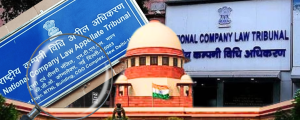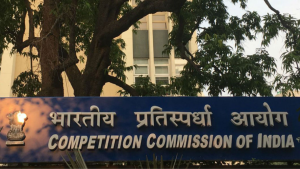

The Matchmaking Exercise
As a part of the Rule of Law Project, Ramya and I were assigned the task of doing something which had never been done before. 24 High Courts, about 2000 different case types (each case is classified into a particular type by the Court. For example, a case which deals which contempt is usually classified as a contempt petition. There is a high degree of variance in this nomenclature as different High Courts may assign different names/case types). Standardising these case types across the 24 High Courts in India and coming up with one comprehensive list which would cover all the High Courts. Each of the 24 High Courts have a few common case types and several uncommon ones. This exercise looked to make a single table to see, for example, what a Writ Petition would be named across the 24 High Courts*. Seems manageable? Read on and you will see how this task can make understanding Christopher Nolan’s movies seem simpler.
The task began with extracting the different case types from the websites of the respective High Courts. While the popular High Courts, such as Bombay, Delhi, Madras, Karnataka, Gujrat had the expansions of case types, a few others like Andhra Pradesh, Gauhati, Tripura, Meghalaya did not have the expansions readily. The expanded case types are indispensable in such an exercise as a ‘Co. Pet.’ can be read as a Company Petition as well as a Contempt Petition and an ‘Appl.’ and ‘Apl.’ can be read as an application or as an appeal and a ‘Rev.’ can be read as review as well as a revision. About 80% of the expansions of case types readily available and about 10% were on a scanned page which had been uploaded as a part of the High Court Rules of the respective states. For the rest of the states, such as Jammu and Kashmir which did not have the case types nor the expansions, we had to visit the cause lists (every court lists out cases which to be heard on that particular day) of those High Courts for about a week daily and extract and expand the case types. While most of the High Courts had the expansions of case types readily and some as a part of the rules, High Courts such as Jammu and Kashmir did not feel the need to put them up anywhere.
After the mammoth exercise of finding the different case types of the 24 High Courts, it was time for the real deal. As Bombay had the highest number of case types, it was chosen as the base list with which the case types of other High Courts would be matched. At this point we noticed some expected similarities as well as many glaring differences in the case types. This trailer showed us that the ride was going to be a super bumpy one. Here are a few instances of the vast variance in the case types of various High Courts.
Variance 1: Let’s take something as simple as a Public Interest Litigation (PIL) to start off with. A few courts decided to have them under the case type of Writ Petitions, the others decided to have a special case type for them, named mostly as ‘PIL’. Some High Courts such as the Bombay High Court went a step further and had a ‘Criminal Public Interest Litigation’ case type as well, other than the ‘Public Interest Litigation’ type.
Variance 2: Some courts had a case type for bail application, many others did not even have a separate case type for bails! While Uttarakhand had first, second, third, fourth, fifth and a sixth case type for bail applications.
Variance 3: While only Calcutta and Bombay had a special case type for BIFR (Board for Industrial and Financial Reconstruction) cases, none others had a special case type for it.
Variance 4: Orissa had 3 specific case types for Matrimonial related matters [MATA-Matrimonial Cases (Appeals), MATCAS-Matrimonial Case (Suits/Petitions), MATREF-Matrimonial Case (References) and MREF-Matrimonial Reference] while many High Courts did not even have a different case type for matrimonial matters. Gujrat had a special case type for petitions under the Christian Marriage Act and Bombay for Parsi Matrimonial Matters, but none of the other courts reflected anything remotely close.
It was heartening to see that there was uniformity in case types relating to Arbitration, Company and Contempt matters. The entire exercise showed us how incoherent the case types of various High Courts are. This exercise lasted a little over 3 weeks, with myriad calls/mails to members of the legal fraternity all over the country and many disturbing dreams while asleep on the intricacies of the high degree of variance.
Matchmaking is hard, isn’t it?
*For convenience, each High Court has been referred to by the name of the state/city mentioned in its actual name.
The views expressed in this article are solely those of the author’s and they do not represent the views of DAKSH.
Shivah
RECENT ARTICLES


Testing the Waters: Pre-Implementation Evaluation of the 2024 CCI Combination Regulations

Not Quite Rocket Science

Administration of justice needs an Aspirational Gatishakti

-
Rule of Law ProjectRule of Law Project
-
Access to Justice SurveyAccess to Justice Survey
-
BlogBlog
-
Contact UsContact Us
-
Statistics and ReportsStatistics and Reports
© 2021 DAKSH India. All rights reserved
Powered by Oy Media Solutions
Designed by GGWP Design